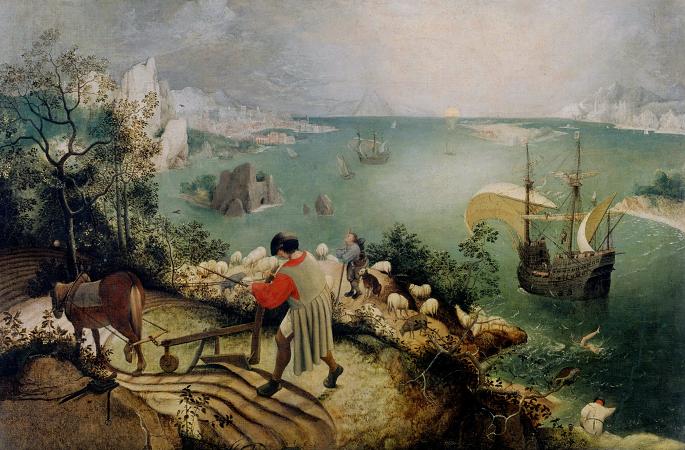Peeter Baltens (c1527 - c1584). Peeter Baltens, Pieter Balten or Pieter Custodis, was a Flemish Renaissance painter, draughtsman, engraver and publisher. Baltens was also active as an art dealer and poet. He was known for his genre paintings, religious compositions and landscapes. His career and artistic development and that of the Flemish painter Pieter Bruegel the Elder were closely intertwined. He is credited as being one of the key inventors of the genre of the village scene in Flemish and Dutch art. Details on the life of Pieter Baltens are scarce. Baltens was born in Antwerp c. 1527 as the son of the sculptor Baltens Custodis. He was registered as a member of the local Guild of Saint Luke in 1540 under the name Pierken Custodis. He was admitted as a master of the Guild in 1550. The early 17th-century Flemish art historian Karel van Mander is the key source on the life of Baltens. Van Mander stated in his 1604 Schilder-boeck that Baltens became a member of the Guild of St. Luke in 1579. It is now known from other sources that van Mander had this date wrong. Van Mander's error is possibly due to a misreading of the date 1569, the date on which Baltens became a member of the governing board of the Guild. Another erroneous statement by van Mander, which had a devastating impact on Baltens' art historical reputation, was to call Baltens a follower of Pieter Bruegel the Elder. Van Mander was in fact wrong on the date on which Baltens joined the local Guild as well as on Baltens' relationship with Pieter Bruegel the Elder which he qualified as that of a follower. In 1550-1551 Bruegel in fact worked as an assistant of Peeter Baltens. The two artists are known to have collaborated on an altarpiece for the Glovemakers' Guild in Mechelen. In this commission it was Baltens who painted the central part of the altarpiece and Bruegel the wings in grisaille. This division of tasks suggests that Baltens was the more established figure in the collaboration. Van Mander further claimed that Baltens visited different countries and made various views from life even though there is no record of such travels. Van Mander wrote that Baltens was a good poet and rederijker and collaborated from time to time with the painter Cornelis Ketel. Peeter Baltens was a member of the Chamber of rhetoric called Violieren. Baltens' son Dominicus moved to Germany where he married the widow of Bartholomeus Kilian. He set up an engraving workshop in Augsburg, which was known as the Kilian family of engravers. Baltens' known oeuvre is limited to 13 paintings and 11 drawings, of which only one is fully signed and none are dated. Baltens painted religious works, village scenes and landscapes, some of which were winter landscapes. He is also believed to have painted tronies, a type of portrait painting depicting unidentified sitters usually with exaggerated facial expressions. An example is the Portrait of a weeping peasant attributed to the artist. Some of the tronies earlier attributed to Baltens have been re-attributed to Marten van Cleve, a contemporary artist with a similar interest in peasant scenes and tronies. Not many signed works of Baltens have been preserved. He signed his paintings and drawings with PB, P. Baltens, Peeter Balten, Peeter Baltens and Peeter B. His work was mainly dedicated to a genre that became very popular during his lifetime: the depiction of the traditions of peasant life. He was one of the first artists to create realistic renderings of village feasts and celebrations with crowds of revellers. While art historians used to regard Baltens as a follower of Pieter Bruegel in the peasant genre, it is now believed to be more likely for Baltens to have influenced Bruegel rather than the other way around or that the artists drew inspiration from each other's works. It also known that Baltens' earliest collaboration with Breughel was on an altarpiece for the Glovemakers' Guild in Mechelen and that in that collaboration Baltens appeared to be the more established artist as he was in charge of painting the central panel. Baltens' work was also influential on the next generation of the Bruegel dynasty as Pieter Bruegel the Elder's son and imitator Pieter Bruegel the Younger copied a detail of Baltens' Ecce homo and turned it into an independent work. His highly coloured and energetically painted figures emphasize the farcical aspects of village life. His interest in the comical side of village life is evident in The performance of the farce of the phony water. The composition depicts a village scene with the performance of the popular farce Een cluyte van Plaeyerwater. The farce tells the story of a wife who sends her husband to find phony water to cure her. In fact the wife plots to have a tryst with her lover, a priest.
more...












